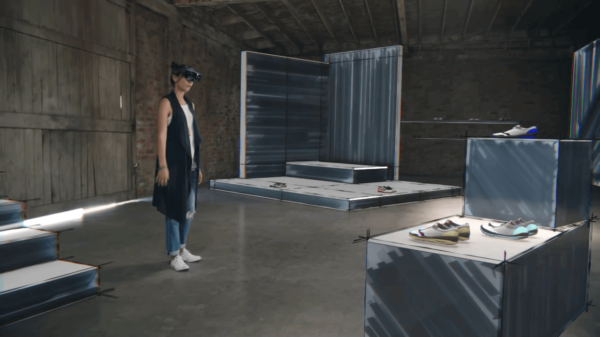Windows Holographic Will Be Made Open To Developers And OEMs

Augmented reality (AR) tech is now taking a step closer to becoming a mainstream piece of technology, thanks to Microsoft’s announcement that Windows Holographic will be made open to third-party developers and its rival OEMs.
Windows Holographic is Microsoft’s AR platform, running on the acclaimed HoloLens AR headset. According to Terry Myerson, head of Microsoft’s Windows and Devices Group, the team at Microsoft is pushing HoloLens and the Windows Holographic platform to have more uses in the field of mixed reality.
Microsoft has come up with a handful of major companies that would consider putting Windows Holographic into their future products – these include HTC, Intel, Qualcomm, Acer, Dell, Hewlett-Packard and Lenovo.
As Windows Holographic goes open to third-party devs and OEMs, they have the ability to customize and tailor specific mixed reality experiences for a range of devices other than the HoloLens. For example, mobile VR could also benefit from mixed reality content with the Google Cardboard, or with high-end VR hardware seeing mixed reality tech such as the case with the Oculus Rift and HTC Vive, among others. This move from Microsoft, which is making Windows Holographic open for third parties, can benefit even the low-end VR market and mobile VR niches.
HoloLens has been projected to lead the AR tech field and is touted to become the gold standard for augmented/mixed reality tech. However, it still carries a hefty price tag to it, which deters some consumers from diving into augmented reality.
The main difference between virtual reality and augmented reality lies in the fact that AR turns any on-screen object into a hologram-based image that floats over and seamlessly blends into the real world scenario, whereas VR creates an entirely virtual environment that sets the user apart from his real world.
A video from Microsoft shows how Windows Holographic could be in the near future. It shows three colleagues creating a store interior while working in different places and using diverse devices all while sharing the same vision of the room. Their finished project is then presented to the client, who views the result in AR. You can watch the video below.
For more information on Windows Holographic, please visit the following websites:
https://blogs.windows.com/windowsexperience/2016/06/01/opening-windows-holographic-to-partners-for-a-new-era-of-mixed-reality/
https://www.microsoft.com/microsoft-hololens/en-us
https://developer.microsoft.com/en-us/windows/holographic

